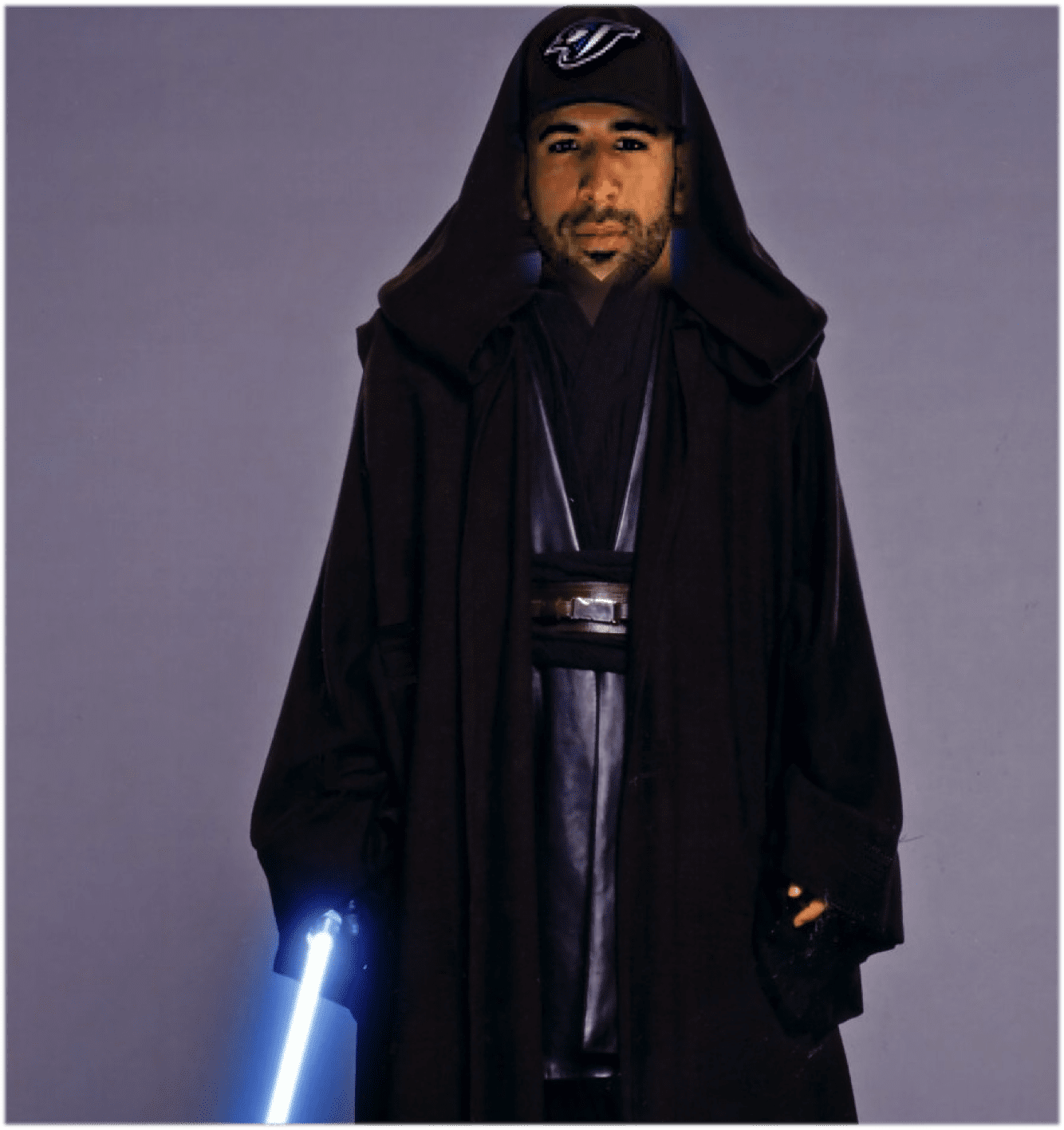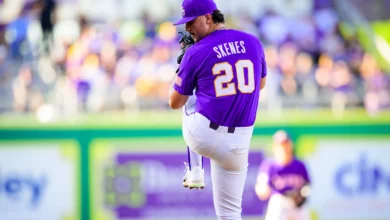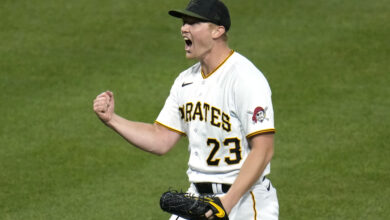

Doubters be damned, Jose Bautista, Superstar, is here to stay. Even as I write this piece, the Blue Jays slugger has launched his MLB-leading 14th, 15th and 16th homers, and raised his average to an AL-best .368. The skepticism and controversy surrounding last year’s supposed Cinderella man has been well-documented, and I won’t do his newfound legacy a disservice by getting bogged down in the mire of groundless PED rumors. I’d like to believe there is more to physicality and to athletic performance than fast-twitch muscle fiber. The change that triggered the metamorphosis of a slightly above-average utility man into a Ruthian figure that pitchers are now forced to avoid like a fully juiced Barry Bonds may not have been a wholly physical change at all. Rather, Bautista worked around his biggest on-field obstacle – his own mind. Let’s talk neurons.
Young Jose had the good fortune to be born to parents determined to put him through private school, an opportunity not every Dominican youth is afforded. He reportedly had a knack for the sciences and for mathematics from a young age and excelled academically. A sharp mind is typically considered a boon to an athlete of any sort, the reasoning, perhaps, being that since there are physical and mental aspects in any sport, intelligence can only positively affect performance. However, Bautista wasn’t just a bright guy. He was also a perfectionist. Take superior cognition and self-awareness, mix with an equal amount of perfectionism, sprinkle in a sport characterized by frequent failure and unpredictability, and add a pinch of emotional volatility. This is the perfect recipe for a grade-A case of what coaches call, “getting in your own way mentally.”
A person with a strong rational intellect typically wants to apply a logical reasoning process to every decision he makes, assuring he makes the right decisions all the time. A batter in MLB typically has less than half a second to decide whether and how to swing at a pitch – the conscious mind simply doesn’t work that fast and a full analysis is impossible. One of the chief mechanical complaints about Bautista through the first seven or so years of his career was that he started his swing too late. This was especially detrimental due to the fact that he used (and still uses) a front leg kick which, though it can boost bat speed, requires pretty precise timing. Bad timing and bad pitch selection became trademarks of Bautista’s plate presence in the big leagues throughout his tenure with the Pirates and during his stints with the O’s and Royals – both tendencies are notorious symptoms of “over-thinking.”
There are multiple reports from Jose’s minor league days in the Pittsburgh system, particularly from coach Tony Beasley, of Bautista’s emotional overreactions to even a single out. Beyond the usual equipment abuse one is used to seeing from frustrated players, this frequently carried over into on-field performance, manifested in wildly errant infield warm-up throws and worse. In a sport where succeeding a third of the time is considered stellar, an emotionally volatile perfectionist is a bad thing to be. But perhaps it can all be attributed to the frustration of trying to apply tried-and-true approaches and seeing them fail. Bautista has never conformed to standard theories of proper approach at the plate, no matter how much coaches have tried to force concepts on him. But that doesn’t mean he hasn’t given them a shot – experimented as any good scientist would.
Now and then, a player comes along who is so naturally gifted that he can succeed at any level in spite of mechanics that run contrary to what every coach and hitting instructor teaches. Have you ever read Ted Williams’ Science of Hitting? If you brush away the fluffy charts and visuals, it basically features Teddy Ballgame telling players to fully extend their arms through the whole swing, swing on a consciously upward angle, and swing for the fences. If you’ve ever worked with a hitting coach worth his salt you’ll understand how wrong these recommendations sound as far as a mental approach to hitting is concerned. But it worked for Ted Williams – because he was Ted Williams. A pair of modern examples that spring to mind are Vladimir Guerrero and Dustin Pedroia. Both have hit (ridiculously well) at every level while using huge looping swings that would make most players exceedingly strikeout prone. Either they never listened to coaches who tried to “correct” them or they were blessed with coaches happy to employ an, “if it ain’t broke,” policy with them.
Which brings us back to Bautista, who is that kind of player. There are pull hitters and there are pull hitters, but Jose Bautista is stone cold dead. He hit 54 home runs last year. Exactly one of them went to the opposite field. It was the first opposite-field bomb of his major league career. Of course most coaches, especially when dealing with a younger player, are going to assume they need to fix a guy this allergic to hitting a ball where it’s pitched. The rare coach – in this case, Toronto’s Dwayne Murphy – will embrace the hitter’s unorthodox approach and adapt the surrounding circumstances to better suit it. By shifting Bautista slightly closer to the plate (allowing him to better pull pitches on the outer corner) and convincing Jose to “attack” pitches rather than “react” to them, Murphy enabled the emergence of the slugger we see today. This, more than anything, has helped keep Bautista’s brain out of his way. He always had a powerful swing, but when he was waiting to see a pitch and then deciding whether to start his swing or not, he was often robbing himself of the chance to make solid contact with tougher pitches. Now he starts his swing regardless and, as he sees the pitch, only has to decide whether to stop the swing. Despite the aggressive implication of the term “attack”, this is really more of a Zen and the Art of Power Hitting effect. By not overthinking, but instead allowing his unconscious mind to control the physical response conditioned by years of practice, Jose achieves a more balanced, more repeatable result.
The success of this approach was actually first evident at the end of the 2009 season, and carried over into his monster 2010 year. Bautista was given steady starts for a change and was, therefore, able to apply a true scientific process with his new approach. A good scientist replicates the conditions of his experiment, and that is hard to do when one gets sporadic playing time – many “Joey Bats” supporters have cited a regular starting role as one of the prime factors that set up his breakout year.
Bautista didn’t stop his self-improvement with last year’s home run title. Despite the power surge, his final batting average was still a less-than-respectable .260 on the season. So far in 2011 he has retained the home run rate, but is also batting more than a hundred points higher thanks to increased pitch selectivity – perhaps of a byproduct of his more relaxed (in a good way) mental state. Various sports writers have described his dominant start to the new season in aggression-laden terminology, saying for instance that he is in “full beast mode,” is a “monster,” and is “determined to prove last year was no fluke.” His swing is still undeniably violent, to the point of being scary. Young baseballs make their father baseballs check under their beds for Jose Bautista’s swing. But despite all the violent action and aggressive description, it is a calmer, clearer mind that is the biggest difference between the new Bautista and the old erratic journeyman. He’s still intelligent, but his intellect and perfectionism are no longer stumbling blocks to his on-field game. So while he is physically wreaking havoc on baseballs and opposing pitchers, there is one thing Jose Bautista is not wreaking havoc on: himself.




